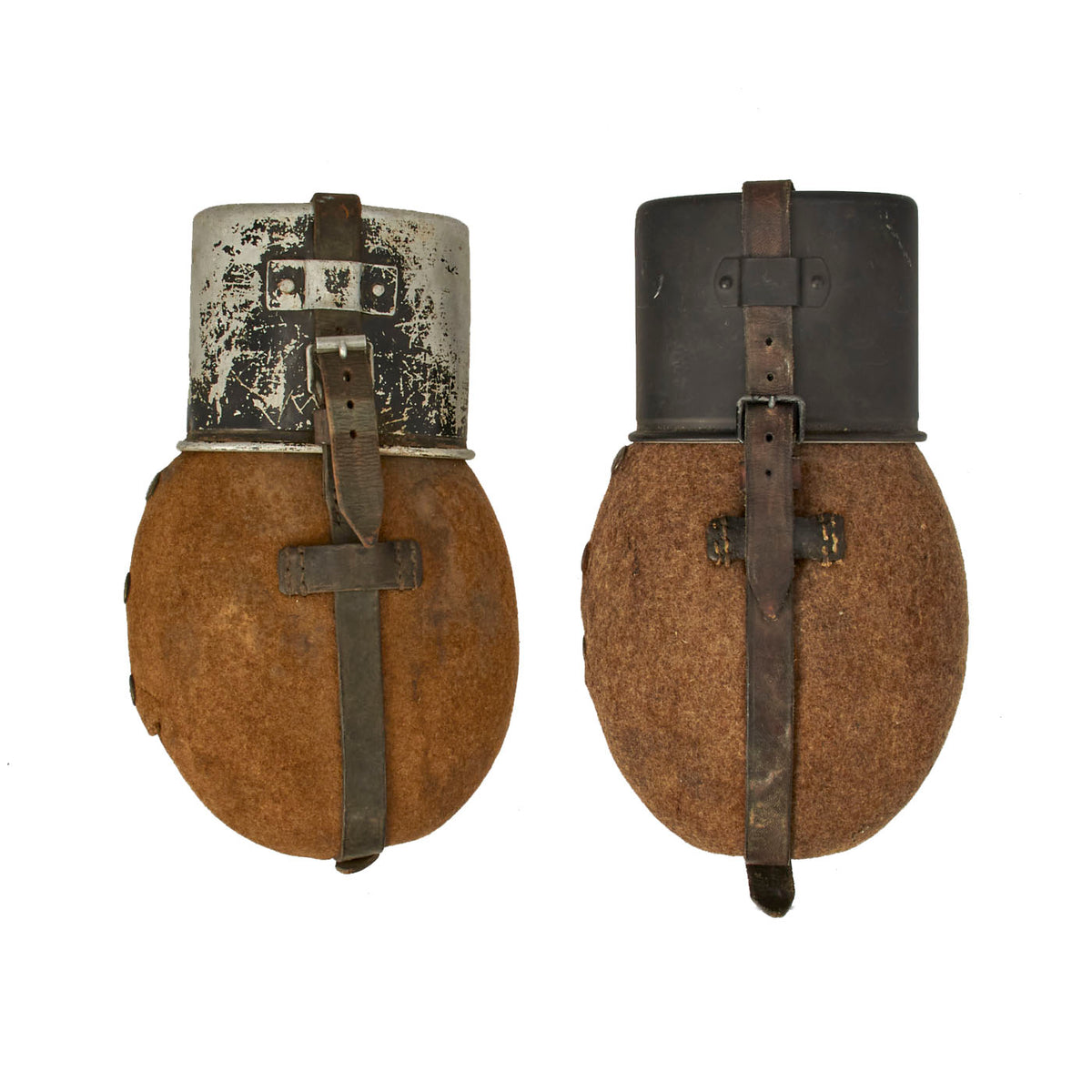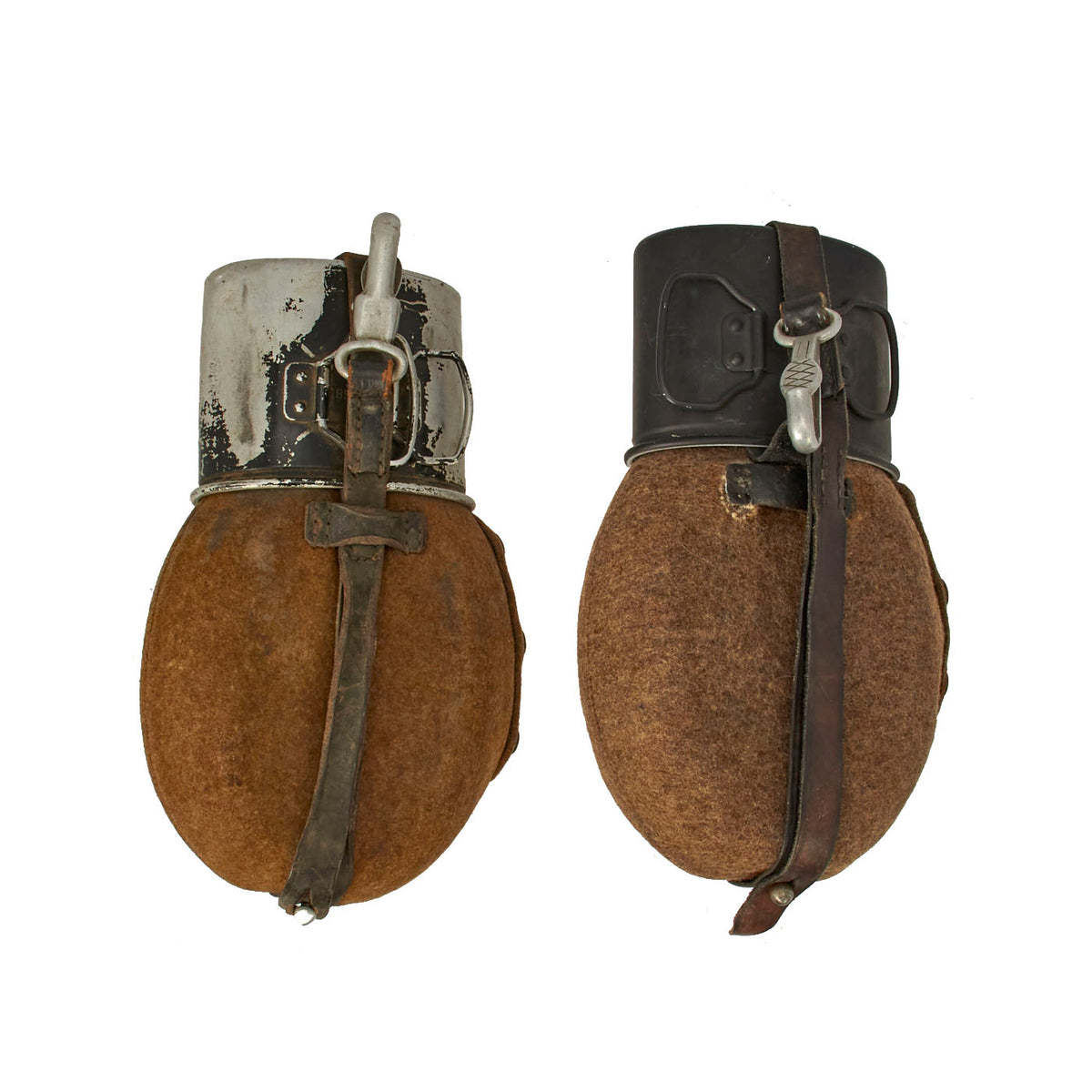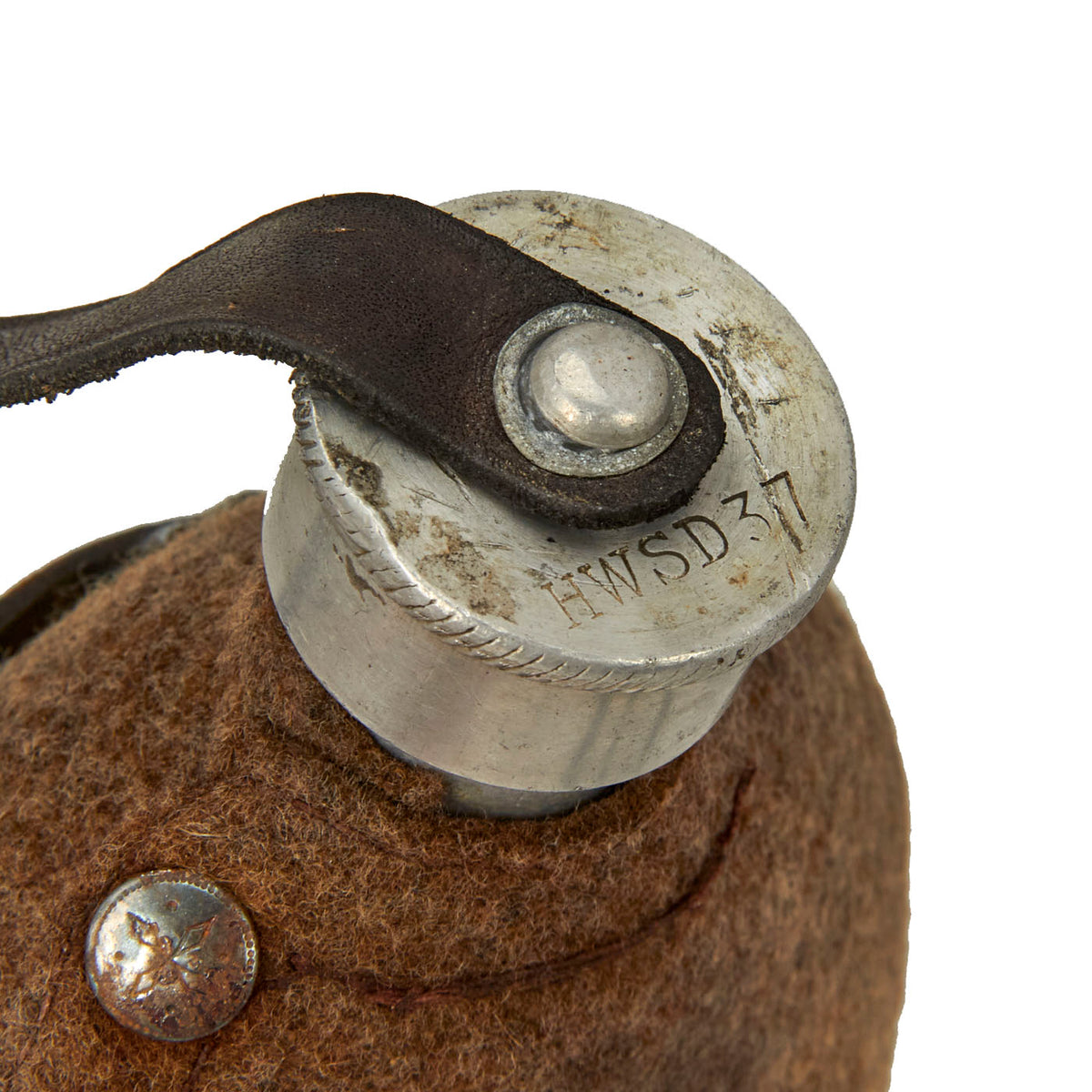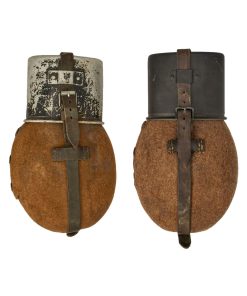Original German WWII Lot of 2 Aluminum M31 Canteens with Large Aluminum Cups and Belt Straps Original Items
$ 325,00 $ 97,50
Original Item: Only One Available. These are nice genuine German WWII Issue M31 aluminum canteen water bottles with aluminum screw top cap, complete with genuine wool cover featuring correct snaps. It also has a standard black leather belt harness, which has a steel belt hook on the back, for attaching to the combat rigging. Unfortunately the leather of the harness on the one has become quite hard and we do not want to risk breaking the strap trying to remove the cup.
The rigging appears to be complete and unbroken on both examples.
Both the canteen body and the canteen screw cap are marked as well as the cup near the handle. The companies that made the Aluminum components for canteens often did not use three letter codes, so these are actually abbreviations of the makers name, and the date. We were unfortunately unable to identify the maker, however this is a known maker mark.
Some of the markings present:
– Canteen Cups: TSR40 & MKK38
– Canteen: SKN37
The felt on both are free of damage with working button snaps. This is a wonderful pair to display side by side, an almost unissued canteen and a field used canteen, great for comparing!
Both come ready to display!
Canteen (bottle)
A canteen is a reusable drinking water bottle designed to be used by hikers, campers, soldiers, bush firefighters (including non-potable water), and workers in the field in the early 1800s. It is usually fitted with a shoulder strap or means for fastening it to a belt, and may be covered with a cloth bag and padding to protect the bottle and insulate the contents. If the padding is soaked with water, evaporative cooling can help keep the contents of the bottle cool. Many canteens also include a nested canteen cup.
Primitive canteens were sometimes made of hollowed-out gourds, such as a calabash, or were bags made of leather.
Later, canteens consisted of a glass bottle in a woven basket cover. The bottle was usually closed with a cork stopper.
Designs of the mid-1900s were made of metal — tin-plated steel, stainless steel or aluminum — with a screw cap, the cap frequently being secured to the bottleneck with a short chain or strap to prevent loosening. These were an improvement over glass bottles, but were subject to developing pinhole leaks if dented, dropped or bumped against jagged rocks.
Contemporary designs are almost exclusively made of plastic, especially polyethylene or polycarbonate. They are typically as light as, or lighter than, their metal equivalents and are quite resistant to developing leaks, even when dropped or severely bumped.
Hunter-gatherers in the Kalahari used ostrich eggshells as water containers, puncturing a hole in them to enable them to be used as canteens. The presence of such eggshells dating from the Howiesons Poort period of the Middle Stone Age at Diepkloof Rock Shelter in South Africa suggests canteens were used by humans as early as 60,000 years ago.
Fast Shipping with Professional Packaging
Thanks to our longstanding association with UPS FedEx DHL, and other major international carriers, we are able to provide a range of shipping options. Our warehouse staff is expertly trained and will wrap your products according to our exact and precise specifications. Prior to shipping, your goods will be thoroughly examined and securely secured. We ship to thousands clients each day across multiple countries. This shows how we're dedicated to be the largest retailer on the internet. Warehouses and distribution centres can be located throughout Europe as well as the USA.
Note: Orders with more than one item will be assigned a processing date depending on the item.
Before shipping before shipping, we'll conduct a thorough inspection of the items you have ordered. Today, the majority of orders will be delivered within 48 hours. The delivery time will be between 3-7 days.
Returns
The stock is dynamic and we cannot completely manage it because multiple stakeholders are involved, including our factory and warehouse. So the actual stock may alter at any time. It's possible that you may not receive your order once the order has been made.
Our policy is valid for a period of 30 days. If you don't receive the product within 30 days, we are not able to issue a refund or an exchange.
You can only return an item if it is unused and in the same state as the day you received it. You must have the item in its original packaging.
Related products
Uncategorized
Uncategorized
Australian WWII Owen MK1 Machine Carbine SMG Custom Fabricated Replica with Sling Original Items
Uncategorized
Uncategorized
Uncategorized
Band of Brothers ORIGINAL GERMAN WWII Le. F.H. 18 10.5cm ARTILLERY PIECE Original Items
Uncategorized
Uncategorized
Uncategorized
Uncategorized
Uncategorized
Uncategorized
Uncategorized
Uncategorized
Uncategorized
Uncategorized
Uncategorized
Armoured Fighting Vehicles of the World: AFVs of World War One (Hardcover Book) New Made Items
Uncategorized
Uncategorized
Uncategorized
Uncategorized
Uncategorized
Uncategorized












































































